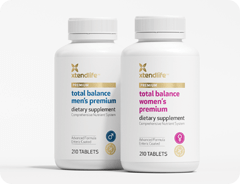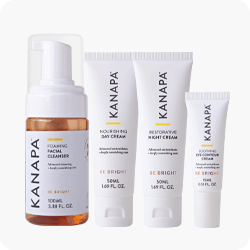If you live in the USA it is likely that you have been exposed to advertising suggesting that 90% of the vitamin tablets that you are taking are going down the toilet. Because these claims are so wide-spread I feel that is appropriate to address the issue of bio-availability and sort out the fact from the fiction.
Is this claim true or not? The answer is not a definitive yes or no because there is no benchmark to base the claim on. I'll try to explain.
Supplements are a bit like cars. For example, at one end of the spectrum you may have a Russian built 1970’s Lada which was cheap, utilitarian and very unreliable and cost a few thousand dollars or you may have a Rolls Royce which is the ultimate in luxury motoring and reliability and will set you back around a half million dollars. There is no comparison between the two vehicles.
The same principle applies to supplements
You can buy cheap supplements at the supermarket and what you get is a product which is manufactured to a (low) price. This means that the cheapest possible ingredients are used as well as the cheapest excipients which bind the ingredients together. To give you an idea of just how big the difference of ingredient costs can be I will quote an example of one nutrient... Beta Carotene.
The overwhelming majority of manufacturers use synthetic beta carotene (including some of the more expensive brands). The cost of pure synthetic beta carotene can be as little as just a few dollars per kilo.
However, the 7.5% natural beta carotene from LycoRed that we use in our Total Balance costs over $220 per kilo.
The same differences apply with Vitamin B12 and many other ingredients. Whereas there are cheaper, inferior forms of vitamin B12, Xtendlife uses the Coenzymated form of vitamin B12, known as Cobamamide (also known as Dibencozide) which costs over $13,000/kg.
The differences do not end with the active ingredients. There can also be big differences with the excipients as well. Some cheaper excipients bind the ingredients together so well that after swallowing the tablet a large proportion of it passes right through your system and it does indeed end up in the toilet.
To make matters worse those ingredients that are released are released in the stomach and can be largely destroyed by your stomach acid. When using these types of cheap supplements as the 'yard stick' the statement that 90% of the supplement ends up in the toilet may be true...
Comparing apples with oranges...

The difference between some supplements can be as great as the difference between apples and oranges, not only in the quality of the ingredients used but also the delivery system employed, or the lack of a delivery system. When I am talking about a delivery system I am referring to how the active ingredients get into your blood stream where they are needed to do their work.
There are several ways in which nutrients can get into your blood stream.
- By injection
- Through the mucous membranes of the mouth (Only some nutrients)
- Via the stomach
- Via the lining of the walls of the upper intestine
The methods which are used are as follows:
- Injection with a hypodermic syringe... only practical via a clinic or physician. Vitamin B12 injections are one example.
- Through the mucous membranes of the mouth by a sublingual tablet or liquid. Note: This has limitations because many nutrients cannot be absorbed through these membranes.
- Via the stomach.
- Via the lining of the walls of the upper intestine. This is how our Total Balance is absorbed through the use of a special enteric coating.
Sadly many supplements do not have any 'delivery' system. They are simply made into a tablet or capsule and if they dissolve within a reasonable time, that's OK.
However, the problem with this is that many of the most potent nutrients like SAMe and reduced Glutathione, which provide some of the greatest age-defying benefits cannot be released in the stomach, because they are destroyed by the stomach acids.
All of our Total Balance products are enteric coated. This means that all of the nutrients are protected from stomach acid, and they are released in the upper intestine.
In the case of Xtendlife’s Multi-Xtra, and some other products, we use standard tablets with a pharmaceutical glaze coating.
We use this type of coating for tablets that are designed to breakdown and release their nutrients in the stomach. These products are carefully formulated to only include ingredients that are effective when released in the stomach.
Every batch of each Xtendlife product is tested using BP (British Pharmacopeia) test methods to ensure that every tablet will breakdown correctly and ensure maximum efficacy.
Xtendlife products will not pass through your system unused and wasted.
For more information, please click on these links to learn more about enteric coating and the delivery systems we use.


 Supplements
Supplements Superfoods
Superfoods Bundles
Bundles









